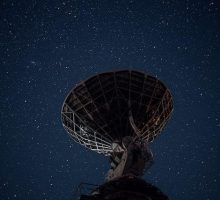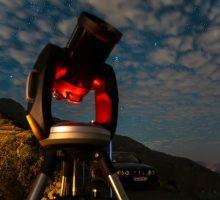Observational astronomy is the study of celestial objects and phenomena by directly observing them using telescopes and other instruments. It is a fascinating and constantly evolving field that has contributed greatly to our understanding of the universe. In this blog post, we will explore the wonders of observational astronomy and its contributions to our knowledge of the cosmos.
History of Observational Astronomy The earliest form of observational astronomy dates back thousands of years to ancient civilizations such as the Babylonians, Egyptians, and Greeks. They used naked-eye observations to track the motion of the Sun, Moon, and stars, and to develop calendars and predictions of celestial events. The invention of the telescope in the 17th century revolutionized astronomy and opened up new vistas of the universe. Observational astronomy has continued to advance over the centuries with the development of new instruments and technologies.
Methods of Observation Observational astronomy encompasses a wide range of techniques and methods, including:
- Optical astronomy: the study of celestial objects and phenomena using visible light telescopes and instruments.
- Radio astronomy: the study of celestial objects and phenomena using radio telescopes and instruments.
- Infrared astronomy: the study of celestial objects and phenomena using infrared telescopes and instruments.
- Ultraviolet astronomy: the study of celestial objects and phenomena using ultraviolet telescopes and instruments.
- X-ray astronomy: the study of celestial objects and phenomena using X-ray telescopes and instruments.
- Gamma-ray astronomy: the study of celestial objects and phenomena using gamma-ray telescopes and instruments.
- Gravitational wave astronomy: the study of ripples in the fabric of space-time caused by the movement of massive objects such as black holes and neutron stars.
Observational astronomy involves collecting data and images from telescopes and other instruments and analyzing them to gain insights into the properties and behavior of celestial objects and phenomena.
Applications of Observational Astronomy Observational astronomy has contributed greatly to our understanding of the universe in a variety of ways. Some of its most important applications include:
- Stellar astronomy: the study of stars, including their properties, formation, evolution, and demise.
- Exoplanet astronomy: the study of planets outside our solar system, including their detection, properties, and habitability.
- Galactic astronomy: the study of the structure, dynamics, and evolution of galaxies.
- Cosmology: the study of the origins, evolution, and fate of the universe as a whole.
- Solar astronomy: the study of the Sun and its effects on Earth and the solar system.
- Astrobiology: the study of the possibility of life beyond Earth, including the search for habitable planets and the detection of biosignatures.
Future of Observational Astronomy Observational astronomy continues to advance rapidly with the development of new instruments and technologies. The upcoming James Webb Space Telescope (JWST) is one of the most anticipated and powerful astronomical observatories ever built, with the ability to study the early universe, the formation of galaxies, and the atmospheres of exoplanets in unprecedented detail. Other exciting developments in observational astronomy include the Square Kilometer Array (SKA), a radio telescope array that will be the most sensitive and powerful ever built, and the Laser Interferometer Gravitational-Wave Observatory (LIGO), which has already made groundbreaking discoveries in the field of gravitational wave astronomy.
Conclusion: Observational astronomy is a vital and exciting field that has contributed greatly to our understanding of the universe. From the earliest naked-eye observations to the cutting-edge telescopes and instruments of today, observational astronomy has revealed countless wonders of the cosmos and continues to push the boundaries of our knowledge. As new instruments and technologies are developed, we can look forward to even more groundbreaking discoveries in the years and decades to come.






